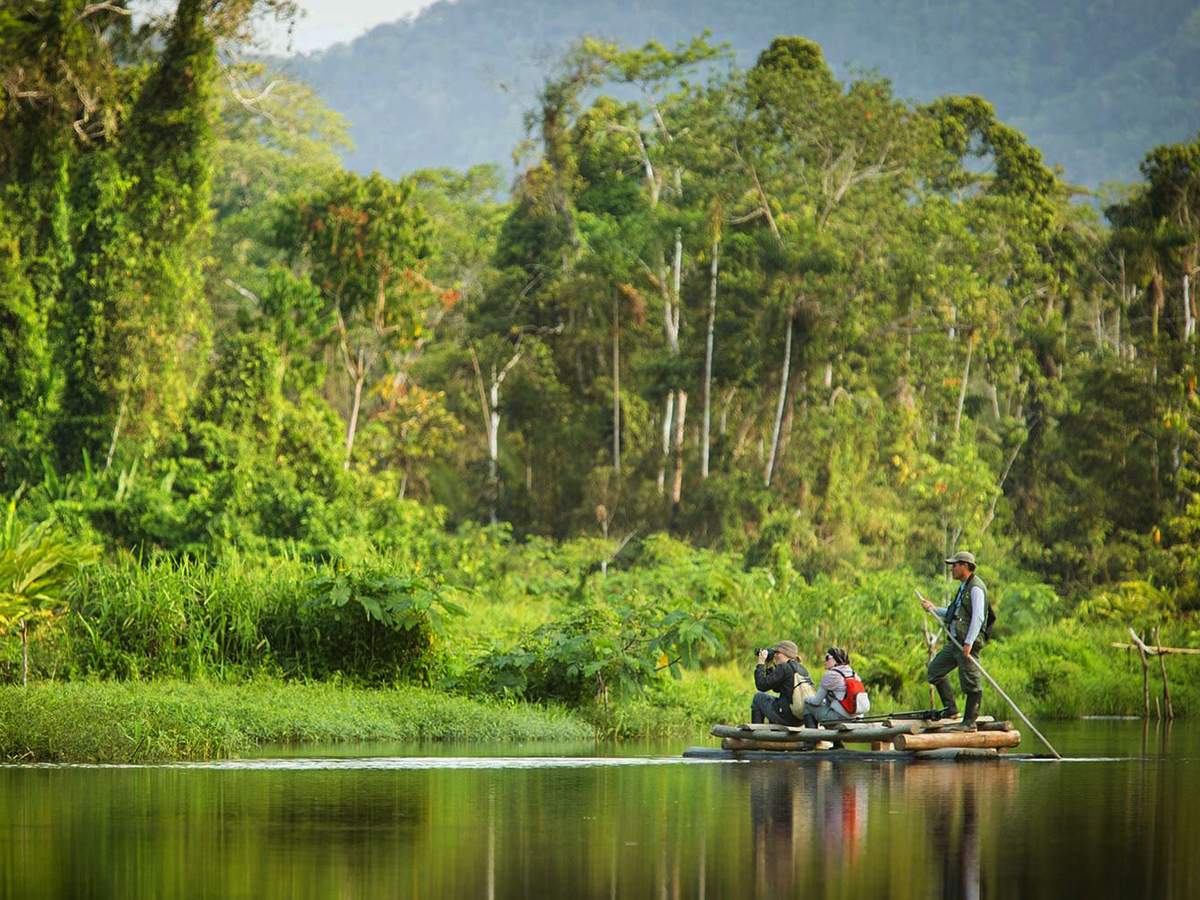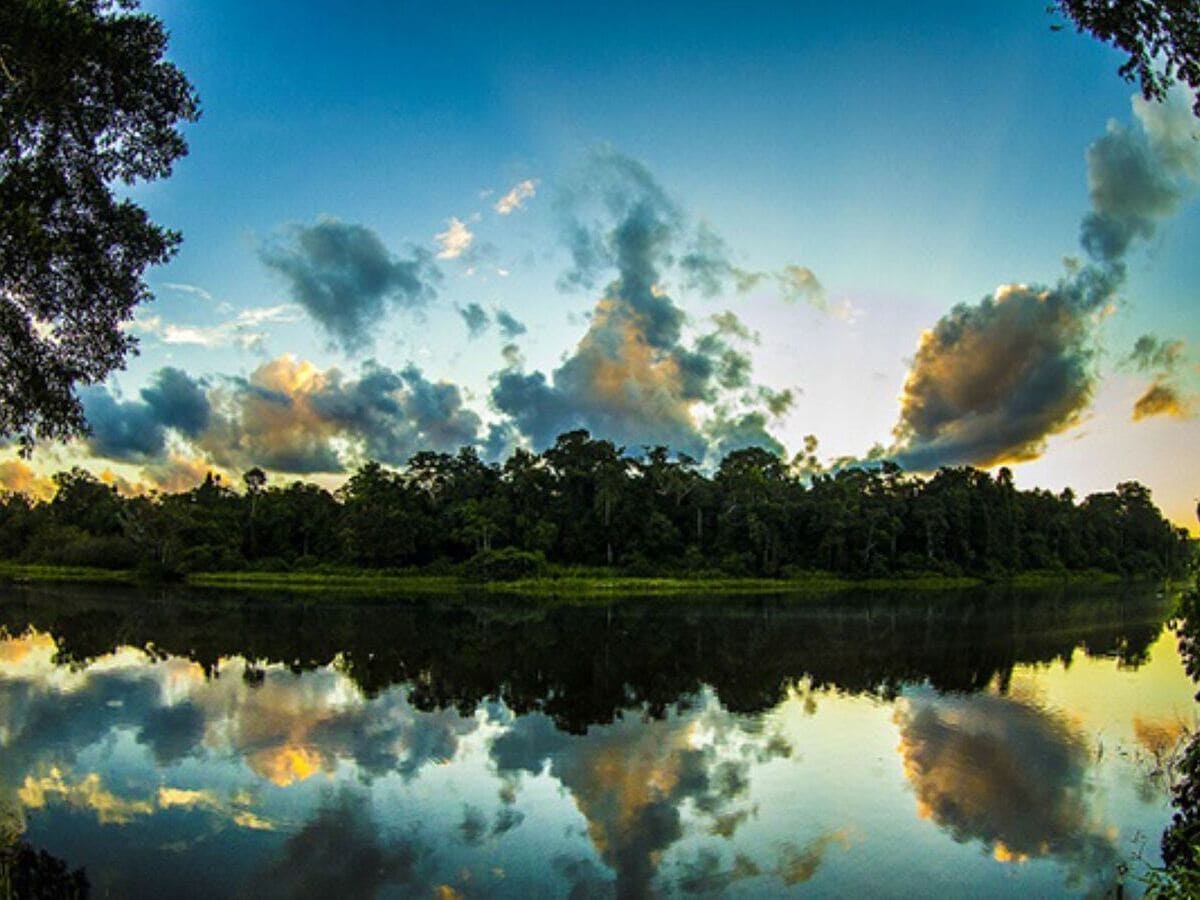
The Amazon, known as the "lung of the planet", extends across a large part of South America, spreading its green mantle over several countries, including Peru, which holds one of the most biodiverse and best-preserved portions. If Machu Picchu is the cultural jewel of the Inca legacy, the Manu National Park is the greatest example of the Peruvian jungle and a paradise of nature.
This natural sanctuary, recognized as a UNESCO World Heritage Site, spans from the cold Andean peaks to the dense lowland jungle, creating a mosaic of unique landscapes and ecosystems. Isolated and protected, the Manu is one of the last refuges of the Amazon that remains practically untouched. In its more than 1.7 million hectares, species typical of the place, indigenous communities and lush vegetation live.
Manu National Park is located in the southeast of Peru, covering territories in the regions of Cusco and Madre de Dios. Its extension goes from the heights of the Andes mountain range, at more than 4,000 meters above sea level, to the plains of the Amazon, below 300 meters. This altitudinal variation creates a diversity of climates and landscapes difficult to find anywhere else on the planet.
The most common entrance for visitors is located in the Paucartambo province, in Cusco, from where the routes to the buffer zone and the heart of the park start. Its remote location is part of its charm: getting there requires a journey that combines road and, in some cases, river navigation, which ensures that the environment remains protected from mass tourism. This isolation has allowed its ecosystem to remain practically intact, making it one of the most authentic destinations in the Peruvian jungle.
Yes. Manu National Park, declared a UNESCO World Heritage Site, is one of the most biodiverse territories on the planet and is part of the Peruvian Amazon. It extends through the departments of Cusco (Paucartambo province, Kosñipata district) and Madre de Dios (Manu province, Fitzcarrald and Manu districts), covering the entire Manu River basin.
Located in southeastern Peru, in the eastern sector of the Andes mountain range and the western edge of the Amazon basin, it is the only park in Latin America that covers all ecosystems, from the tropical lowlands to the cold Andean punas above 4,000 meters above sea level.
Created on May 29, 1973, the park protects 1,716,295 hectares of jungle, mountains, and rivers. In the lower Manu River basin, the exuberance of the Amazon plain stands out, home to hundreds of species of birds, mammals, and reptiles. Among the sectors enabled for tourism are Salvador, Otorongo, Juárez, Pakitza, and Limonal, all with navigable lakes or oxbow lakes. Here it is possible to spot giant river otters, black caimans, macaws, monkeys, and an impressive variety of tropical flora.

Manu Amazon
Visiting the Manu National Park is a unique experience for lovers of ecotourism and nature. Its routes combine adventure, wildlife observation, and cultural contact, offering activities for all types of travelers. Among the most outstanding experiences are:
Manu is located 403 miles from the hot and isolated regional capital of Puerto Maldonado, which acts as a gateway to the reserve. Puerto Maldonado can be reached by land from Cusco, or by air through Lima. (It is possible to arrive by air from Cusco as well, but by hiring light airplanes instead of public transport.) From there you can go through the Manu river by boat. It is advisable to arrive from Cusco in organized tour packages, as the entrance is not sold to individuals but to authorized agencies.
From May to October it is very hot, with cool nights and frequent rains. The rainy season goes from January to March, but there may be unexpected rains throughout the year, so travelers should bring their poncho independently!. Tours may or may not be available but with significant changes, during the rainy season, depending on water levels. Prepare for the heat (daily averages of temperature 35ºC during the day and 25ºC during the night), but covering your extremities, by searching for long sleeves in light fabrics as protection against insect diseases.
Manu National Park, located in southeastern Peru, has a varied climate due to its great extension and the variation of altitudes in its territory. The park extends from the lowlands of the Peru Amazon rainforest to the mountainous regions of the Andes. In general, Manu National Park's climate is tropical and humid in the lowlands and subtropical in the higher areas.
It is important to keep in mind that climatic conditions can vary according to altitude and season. If you plan to visitManu National Park, it is advisable to bring adequate clothing and equipment to adapt to the changing climatic conditions of the region.

Exploring the Peruvian Amazon is to know a world full of wildlife, vast jungles, and communities that preserve traditions. Each tour allows you to discover amazing landscapes and live with nature in its purest state, turning the trip into an unforgettable experience. Learn about the most outstanding tours of the Amazon:
Inca Trail, Machu Picchu and more